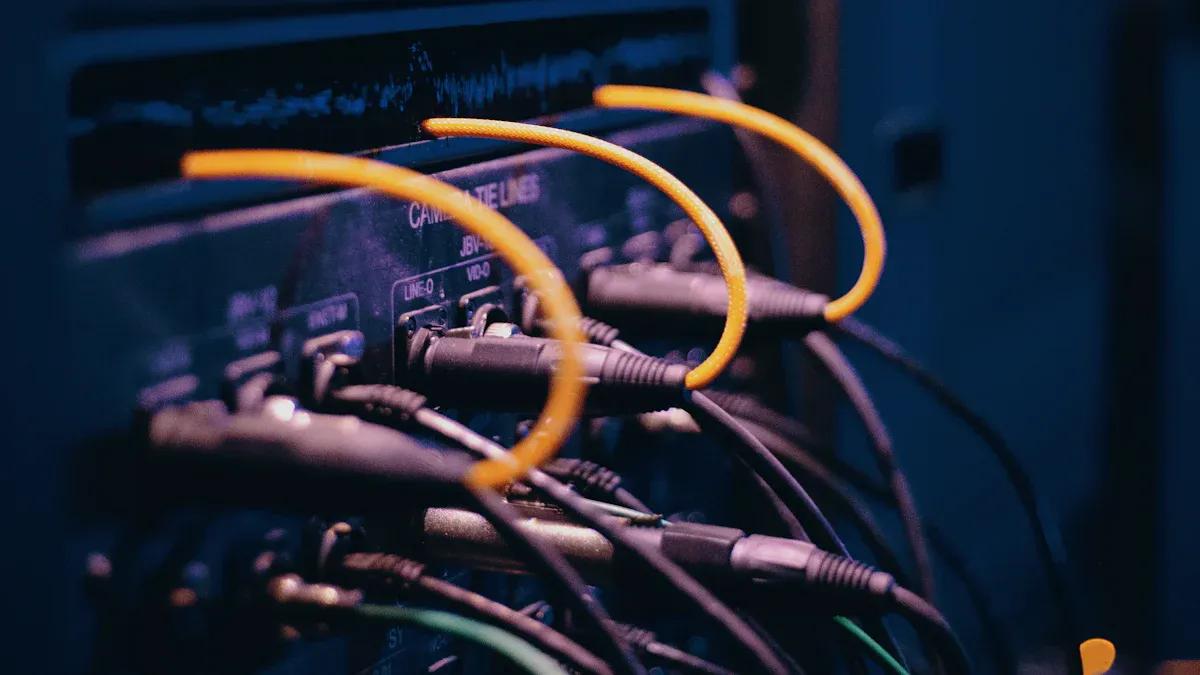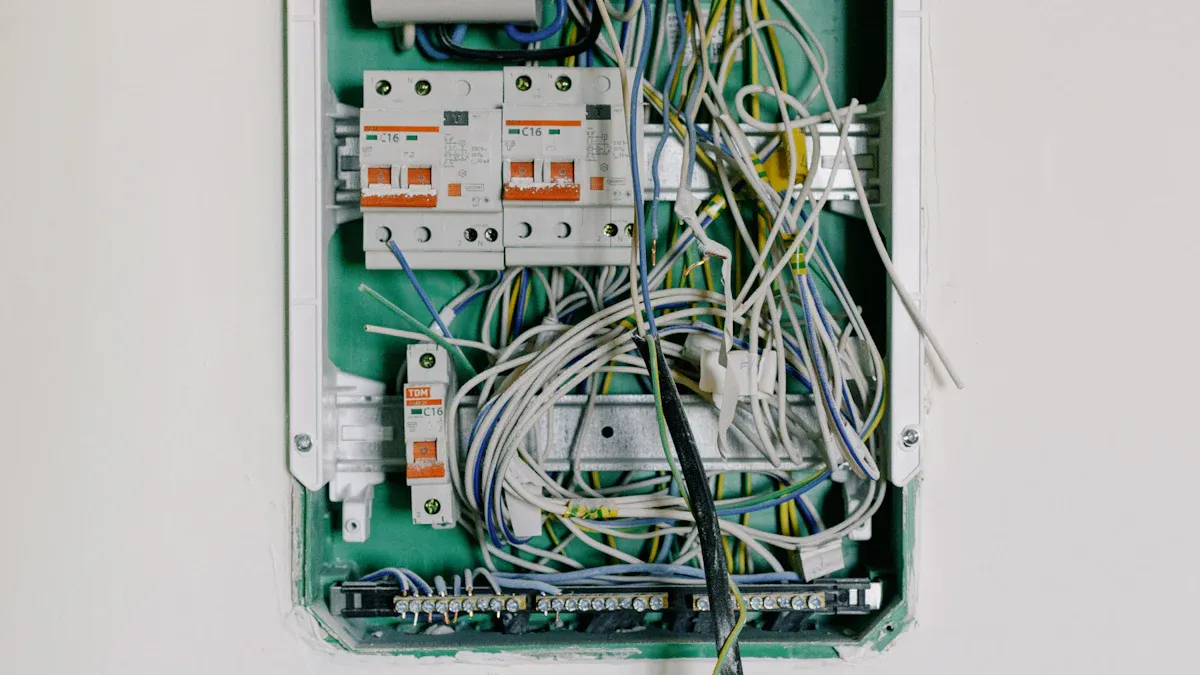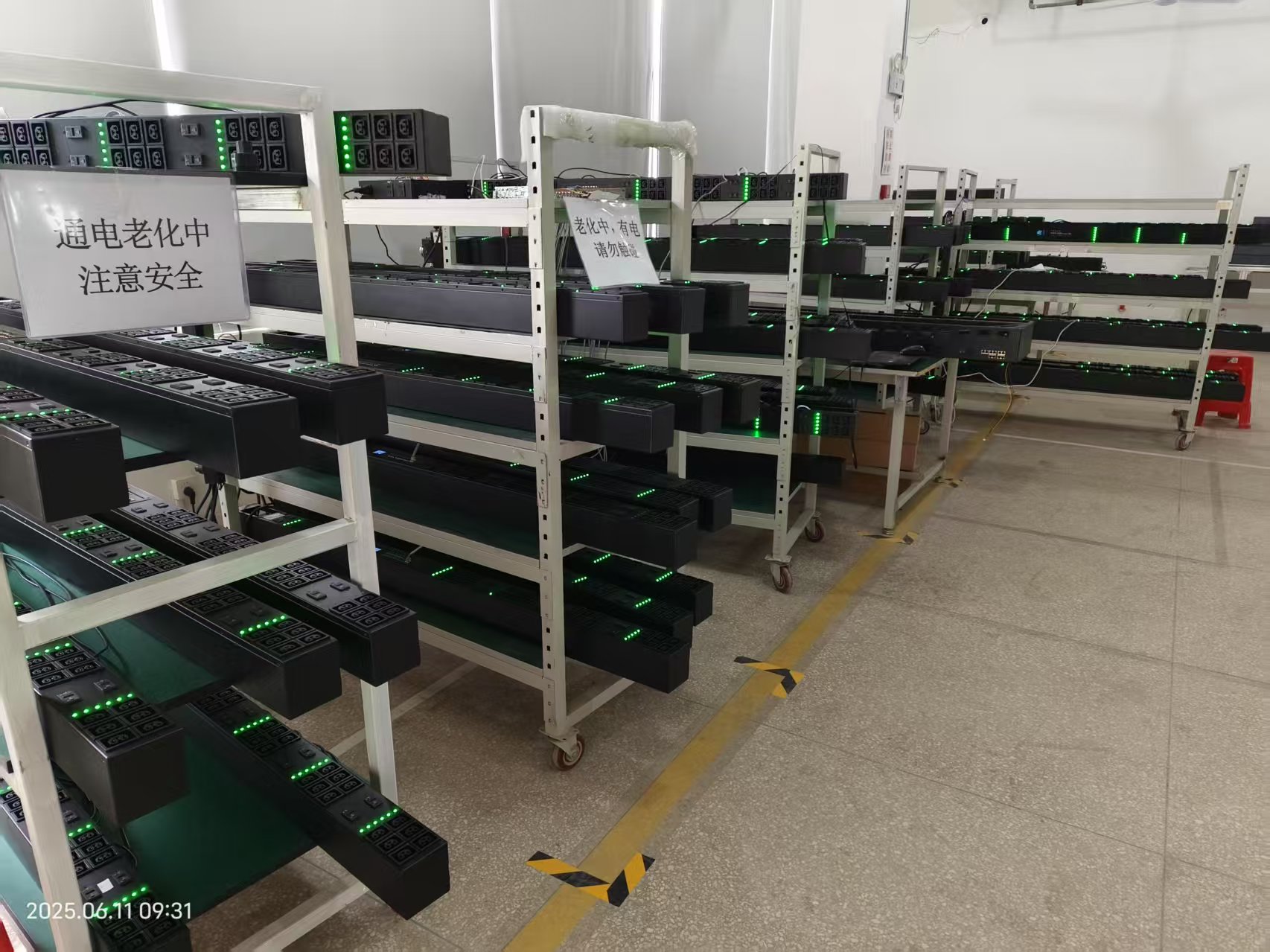
Metered PDUs monitor and display power consumption, allowing users to track energy usage effectively. In contrast, unmetered PDUs distribute power without monitoring capabilities. Understanding these differences is crucial for optimizing power management in data centers and ensuring efficient operation of devices like the Metered Rack Mount PDU.
Key Takeaways
- Metered PDUs provide real-time monitoring of power consumption, helping users manage energy usage effectively.
- Unmetered PDUs offer a cost-effective solution for basic power distribution without monitoring capabilities.
- Choosing the right PDU depends on your operational needs, budget, and whether you require power monitoring.
Definition of Metered PDU
A Metered PDU (Power Distribution Unit) is an essential device in data centers and IT environments. It not only distributes electrical power to multiple devices but also monitors and displays power consumption in real-time. This dual functionality enhances the reliability and efficiency of power management.
Features of Metered Rack Mount PDU
Metered Rack Mount PDUs come equipped with several key features that distinguish them from standard PDUs. These features include:
- Digital Display: A built-in digital display shows real-time data about electrical power consumption.
- Load Balancing: Metered PDUs help balance loads, preventing overcapacity issues that can lead to equipment failure.
- Measuring Function: They monitor the consumption of connected devices at individual sockets, providing detailed insights into power usage.
- Remote Access: Some models allow users to access measured data remotely, facilitating better energy management.
- Safety Measurement: These units measure residual current for operational safety and can set threshold values for alerts.
Here is a summary of the technical specifications typically found in metered rack mount PDUs:
| Specification | Description |
|---|---|
| Input Power Capacity | Up to 67kVA |
| Input Currents | 12A to 100A per line |
| Input Voltages | Various options from 100V to 480V |
| Metering Accuracy | ±0.5% |
| Outlet Receptacle Density | Up to 54 outlets |
| Maximum Ambient Temperature | 60°C (140°F) |
| Relative Humidity | 5-90% RH (operating) |
Monitoring Capabilities
The monitoring capabilities of metered PDUs are crucial for effective power management. They collect real-time data on various parameters, including:
- Current (A)
- Wattage (W)
- Voltage (V)
- Frequency (Hz)
This data allows users to track peak load, power factor, and overall energy consumption over time. Users can access this information through local monitoring methods, such as LED indicators and LCD displays. Additionally, many metered PDUs offer remote monitoring via web interfaces and power management software, enabling efficient data center management.
Definition of Unmetered PDU
An Unmetered PDU (Power Distribution Unit) serves as a straightforward power distribution solution in data centers and IT environments. Unlike metered PDUs, unmetered units focus solely on distributing electrical power without providing any monitoring capabilities. This simplicity makes them a popular choice for certain applications.
Features of Unmetered PDU
Unmetered PDUs come with several essential features that cater to basic power distribution needs. These features include:
- Basic Power Distribution: They distribute power to multiple devices without any monitoring functions.
- Variety of Configurations: Unmetered PDUs are available in various configurations, including horizontal and vertical designs, to fit different rack setups.
- Cost-Effective Solution: These units typically cost less than their metered counterparts, making them an attractive option for budget-conscious organizations.
- Robust Design: Unmetered PDUs often feature durable construction, ensuring reliable performance in demanding environments.
Lack of Monitoring Capabilities
The absence of monitoring capabilities in unmetered PDUs can significantly impact power management in data centers. Without real-time data, users face several challenges:
- Unmonitored PDUs can lead to equipment overheating and circuit breaker malfunctions.
- Lack of monitoring complicates the identification and resolution of power quality issues.
- Data centers may experience costly downtime due to unstable power infrastructure.
These factors highlight the importance of considering monitoring needs when selecting a PDU. While unmetered PDUs offer a simple and cost-effective solution, they may not provide the necessary oversight for optimal power management in more complex environments.
Comparison of Metered and Unmetered PDUs

Advantages of Metered PDUs
Metered PDUs offer several key advantages that enhance power management in data centers. These benefits include:
| Advantage | Description |
|---|---|
| Energy Efficiency | Metered PDUs enhance energy efficiency by providing precise measurements of power consumption. This allows for effective monitoring and management of energy usage. |
| Cost Management | They enable accurate allocation of energy costs in shared environments, preventing circuit overloads and optimizing energy distribution. This ultimately reduces operational costs. |
| Applications | Commonly used in data centers and server rooms, metered PDUs support capacity planning and maximize uptime, ensuring reliability in mission-critical environments. |
Organizations can also identify energy-intensive devices through precise data on power usage. By optimizing these devices, they can reduce unnecessary power consumption, leading to lower utility bills. A study by Bitkom indicates that energy efficiency can improve by 30% through the measurement functionality of PDUs.
Advantages of Unmetered PDUs
Unmetered PDUs provide a straightforward solution for power distribution. Their primary advantages include:
- Simplicity: Unmetered PDUs focus solely on distributing power, making them easy to install and use.
- Cost-Effectiveness: These units typically cost less than metered options, making them suitable for budget-conscious organizations.
- Robust Design: Unmetered PDUs often feature durable construction, ensuring reliable performance in demanding environments.
Use Cases for Each Type
Metered PDUs are ideal for environments where monitoring power consumption is critical. They suit data centers, server rooms, and mission-critical applications. In contrast, unmetered PDUs work well in less complex setups, such as small offices or environments where power usage does not require close monitoring.
Metered PDUs offer real-time monitoring and energy management, making them ideal for complex environments. Unmetered PDUs provide a cost-effective solution for simpler setups. When choosing between them, consider factors such as operational needs, budget, and energy compliance goals:
- Power Requirements: Understand the total power needs of your equipment.
- Advanced Features: Consider options like real-time monitoring and remote management.
Selecting the right PDU ensures efficient power distribution and minimizes risks associated with power quality issues.
FAQ
What is the primary function of a metered PDU?
A metered PDU monitors and displays real-time power consumption, allowing users to manage energy usage effectively.
When should I choose an unmetered PDU?
Choose an unmetered PDU for simple setups where monitoring power consumption is unnecessary and cost savings are a priority.
Can I upgrade from an unmetered to a metered PDU?
Yes, upgrading from an unmetered to a metered PDU is possible. Ensure compatibility with existing infrastructure before making the switch.
Post time: Sep-27-2025






